What Size Boat Fenders Do I Need?
Because there are several styles of boat fenders available, the size of the fenders you choose to go with can vary based on that. In general, the size of your boat determines the size of the fenders and the larger the boat the larger the fenders you’ll need and/or the more of them you’ll require as well. Let’s take a look at some of the types and the sizes that work best for various kinds of boats.
As a general rule of thumb you want to increase the diameter of your fender in conjunction with an increase in boat size. Most boaters seem to follow the trend of one inch of cylindrical diameter for every 4 to 5 feet of boat length. This is compared to round fenders where you go with two inches of diameter for every four to five feet of boat length.
This is just a general guide, however, and those rules don’t always apply in every situation, which we’ll get to shortly.
Four Main Types of Fenders
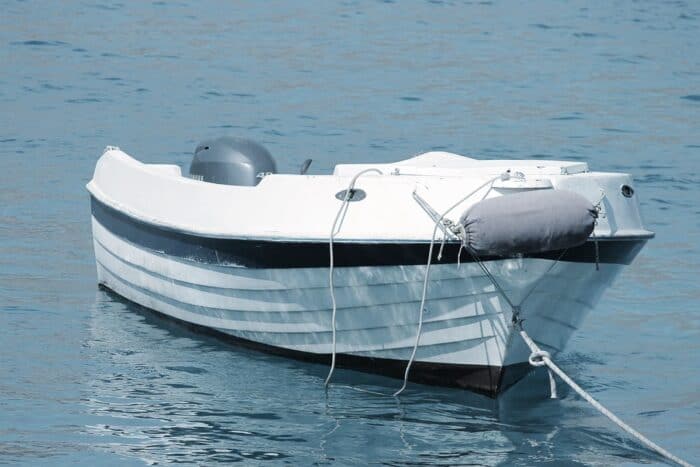
Let’s try to stick with the most common fender types and how you can determine what size you’ll need for your boat.
Cylindrical Fenders
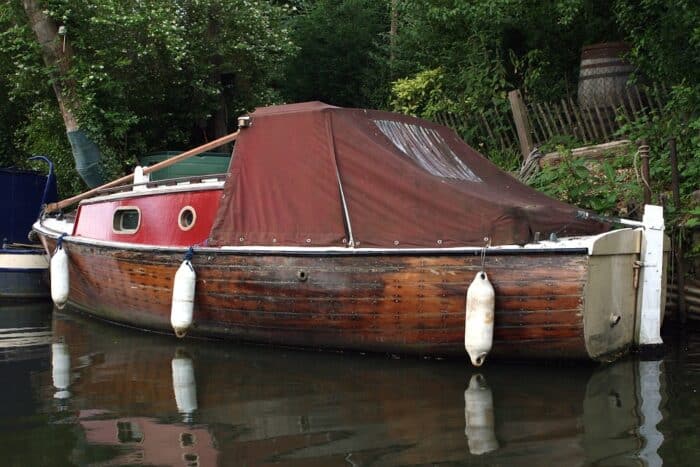
A cylindrical fender can be hung either vertically or horizontally. The size of your boat determines just how big these fenders should be. Sometimes these are called long fenders or walking fenders as well. You may also see these called cylindrical double eye fenders. That’s because, on either end, there is a hole that you can use to tie fenders in whatever position works best for you. Tied at one end will allow it to remain vertical while using boat ends of the double eye will allow you to hang it horizontally.
| Boat Length | Cylinder Fender Diameter |
| Under 10 feet | Three inches |
| 10 feet to 15 feet | Three inches to four inches |
| 15 feet to 20 feet | 5 inches to 5.5 inches |
| 20 feet to 25 feet | 6 inches to 6.5 inches |
| 25 feet to 35 feet | 8 inches to 8.5 inches |
| 35 feet to 50 feet | 10.5 inches to 12 inches |
| 50 feet to 60 feet | 12 inches |
| 60 feet and over | 15 inches to 24 inches |
Cylindrical Center Hole Fenders
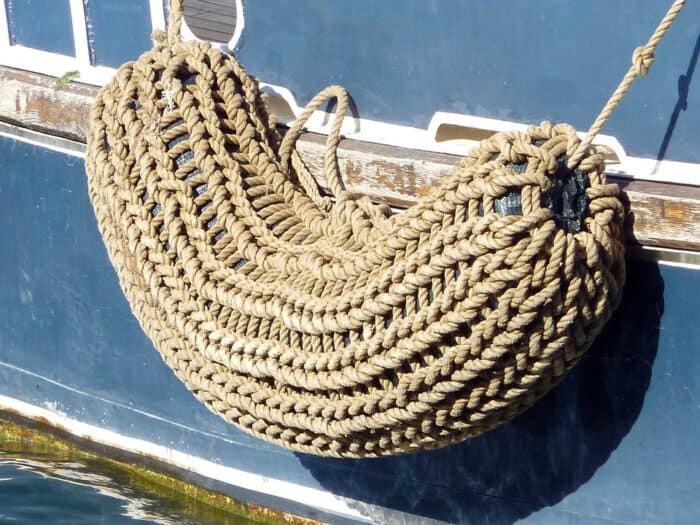
These are essentially the same as the standard cylindrical fenders but instead of holes at either end to tie your ropes to, the rope can be fed through the center allowing these to be hung horizontally or hung vertically as well.
| Boat Length | Cylinder Center Hole Fender Diameter |
| Under 10 feet | Three inches |
| 10 feet to 15 feet | Three inches to four inches |
| 15 feet to 20 feet | 5 inches to 5.5 inches |
| 20 feet to 25 feet | 6 inches to 6.5 inches |
| 25 feet to 35 feet | 8 inches to 8.5 inches |
| 35 feet to 50 feet | 10.5 inches to 12 inches |
| 50 feet to 60 feet | 12 inches |
| 60 feet and over | 15 inches to 24 inches |
Round Fenders
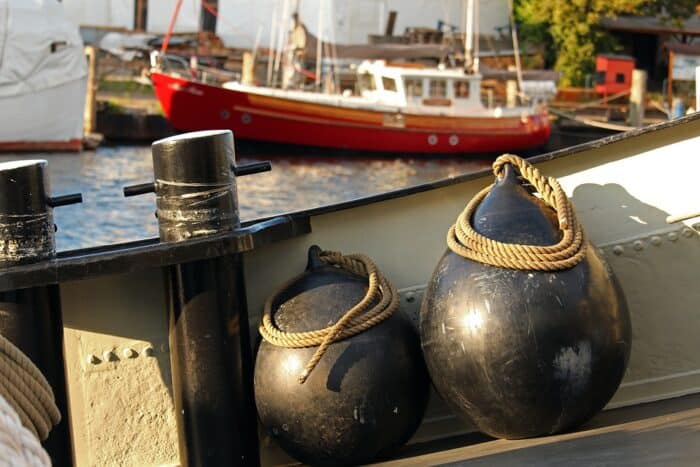
These look like small buoys or Christmas balls depending on the color. They are made from vinyl and are usually used only on larger vessels as they are not really recommended for smaller boats at all. Because these fenders are inflated and larger, they are best used in larger boats that have the storage space to accommodate them. They’re helpful in maneuvering in tight spaces and they can be used to mark things like an anchor location as well.
| Boat Length | Round Fender Diameter |
| Under 10 feet | Not recommended |
| 10 feet to 15 feet | 9 inches |
| 15 feet to 20 feet | 12 inches |
| 20 feet to 25 feet | 15 inches |
| 25 feet to 35 feet | 18 inches |
| 35 feet to 50 feet | 21 inches |
| 50 feet to 60 feet | 27 inches |
| 60 feet and over | 27 inches to 34 inches |
Flat Fenders
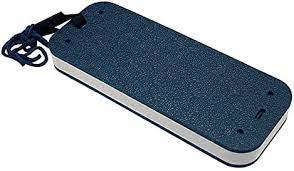
These are very simple fenders most often used with smaller boats. Like the name suggests, they’re just flat pads covered in vinyl to work as a buffer and are modular so you can create a sort of custom fender layout with them. They’re attached over the gunwale of your boat and don’t have diameters like the other types of fenders so much as standard sizes. Because they are so compact they are ideal for boats with limited space.
| Boat Length | Flat Fender Size |
| Under 10 feet | Small sized flat fenders |
| 10 feet to 15 feet | Small sized flat fenders |
| 15 feet to 20 feet | Small sized flat fenders |
| 20 feet to 25 feet | Medium sized flat fenders |
| 25 feet to 35 feet | Medium sized flat fenders |
| 35 feet to 50 feet | Large sized flat fenders |
| 50 feet to 60 feet | Large sized flat fenders |
| 60 feet and over | Large sized flat fenders |
Additional Fender Types
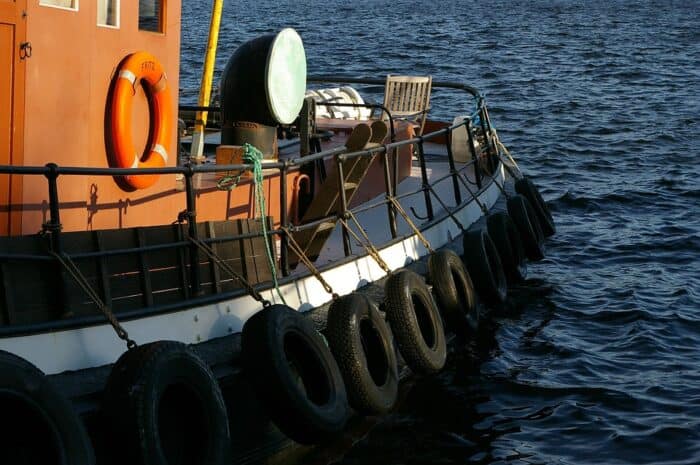
You can also find a number of types like the hybrid oval cylindrical fenders, transom fenders and more that can potentially be used as well, though they tend to be less common. The right boat fenders can be any of these, of course, it really just depends on your boat and what works for you. If you are interested in one of these other kinds it’s best to check whatever guides are provided with them to ensure you have the right size.
How Do You Size a Boat Fender?
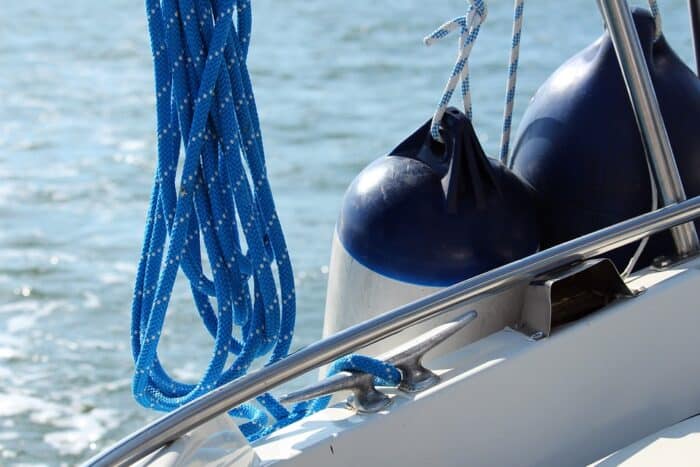
Boat fender size increases with your boat size, as we said. You may want to consider larger fenders or, at least, more fenders if you plan to be docking your boat in a place known to have more chop and rougher waters. For instance, if you keep your boat docked on a little lake by your cottage that stays calm all your long, you can get away with the smaller fenders pretty easily. But let’s say you’re in one of the Great Lakes or maybe in coastal waters that can get pretty rough when bad weather rolls in. In those cases, you’d do well to have some good sized fenders and potentially one or two extra ones equipped as well, just in case your boat gets roughed up a little.
In addition, the weight of your boat can also affect the fender size. Boat weight increases should generally go hand in hand with fender size increases as a heavier boat is more likely to need that extra padding. In these case, fender covers may also be helpful to keep your fenders from being badly damaged.
How Many Fenders are Needed for a 20 Foot Boat?
Because this is right on the cusp between sizes it can be a little difficult to figure out sometimes which is best here. I’d always aim for the larger size fender just to be cautious. So, if you want to use flat fenders on a 20 foot boat, bump up to the medium size. If you are using either of the cylindrical shaped fenders, aim for a six inch diameter. And if you’re interested in round fenders, try a 15 inch diameter.
Once you have the size, make sure you have enough as well. The rule here is one fender for 10 feet of waterline but you want a minimum of three. So, for example, if you have a 20 foot fishing boat and like center hole cylinder fenders you’ll need three fenders of six inch diameter on your boat.
How Many Fenders are Needed for a 50 Foot Boat?
When you hit 50 feet you’re again on the cusp between sizes so I’d suggest sticking with the larger size to be safe. That means, if you’re looking at cylinder fenders, stick with 12 inches in diameter. If you want to use round fenders then you’ll need to go up to 27 inches in diameter. This is ideal to keep your boat as safe as you can.
Taking the size of the boat into account you’ll want to have 5 of these sized fenders equipped at the very least for a boat of this size.
What Fenders Do You Need For a Larger Boat Length?
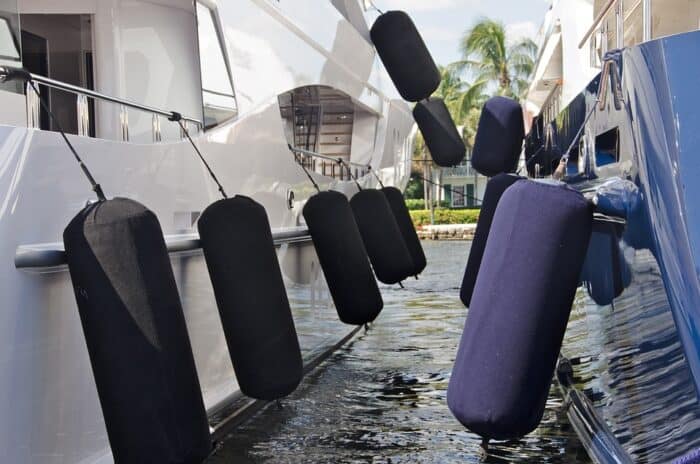
The charts we have included stop at 60 feet. Sometimes you’ll see 60 to 72 feet listed as the cut off here but then no size for fenders is listed above 72 feet. Once you get to that size of a boat you’ll be looking at a decent sized vessel and of course you still need fenders, but they just don’t make them much larger than what we’ve included. And honestly, they can’t. As you can see, the round fender sizes go up by about 3 inches for every 10 feet to 15 feet of boat, give or take. So if you continued the size upgrade you could end up round fenders that are maybe 3 feet in diameter or more. Imagine trying to store upwards of a dozen three-foot diameter balls on your 120 foot boat. That’s a pain even with fender racks.
So the size maxes out more or less where we cut them off on the tables, you’ll just need to make sure you have enough to accommodate the length. The largest boats need to focus more on the right quantity of fenders as opposed to the size of them. Keeping in mind you’re probably not pulling a megayacht into the local dock to fill up for gas or grab snacks anytime soon, either, so there will be fewer instances when this even comes up, but these large boats do need to be berthed now and then so you’ll want to make sure you have the appropriate number on board. If you need yacht fenders and aren’t sure, you can always check with your manufacturer or the local yacht club to get advice.
The Bottom Line
The size of your fenders depends on two main factors which are the size of your boat and also the type of fenders you want to use. To a lesser degree you also want to take into account the conditions where your boat is going to be berthed in case the water has the potential to get rough and maybe necessitate larger fenders for safety sake.
A general rule of thumb that most boat owners go by states you to have 1 inch in diameter size for cylindrical fenders and 2 inches in diameter for round fenders for every 4 or 5 feet of boat length. If you’re opting for flat fenders then you can simply upgrade from small to medium to large in increments of roughly 20 feet.
Categories: Boats











